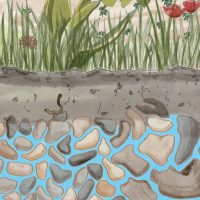50 Foods You Should Be Eating
Future 50 - Diversify your diet and save wildlife and the environment
The World Wildlife Federation (WWF) and Knorr have team up to create a report on the food we should be eating which will help the environment by, among other things, promoting bio-diversity. They are calling it the Future 50.
Did you know that seventy-five percent of the global food supply comes from only 12 plant and five animal species? And that just 3 crops account for 60 percent of the calories from plants that people consume? Those three crops are rice, maize (corn) and wheat.
How did they choose the 50?
According to the report,
The Future 50 Foods have been selected based on their high nutritional value, relative environmental impact, flavour, accessibility, acceptability and affordability. This set of criteria is modelled after the Food and Agricultural Organization’s (FAO) definition of sustainable diets. Some of the Future 50 Foods have higher yields than similar crops, several are tolerant of challenging weather and environmental conditions, and many contain significant amounts of critical nutrients. (Page 5)
For example, beans and pulses were chosen because “they can convert nitrogen from the air and ‘fix’ it into a form that can be readily used by plants. More than environmental superheroes, beans offer us a rich source of fibre, protein and B vitamins. They are eaten in many dishes all over the world and have a mild flavour and meat-like texture, making them a sensible swap for meat in stews, soups and sauces.” (Page 11)
“Future 50 Foods is the beginning of a journey and a way for people to make a change, one delicious dish at a time.”
Did you know that walnuts are the oldest known tree food? Or that sprouting chickpeas and kidney beans make them MUCH more nutritious? Or that 30 grams of hemp seeds provides one gram of fibre, nine grams of protein, and a good source of iron? CLICK here to read the report and the reasons these foods were chosen. Some of it is fascinating.
Here are the Future 50 foods:
Algae
1) Laver Seaweed
2) Wakame Seaweed
Beans
3)Adzuki
4) Black Turtle Bean
5) Broad Beans (Fava)
6) Bambara Groundnuts
7) Cow Peas
8) Lentils
9) Maram Beans
10) Mung Beans
11) Soy
Cacti
12) Nopales (Prickly Pear)
Cereals
13) Amaranth
14) Buckwheat
15) Finger Millet
16) Fonio
17) Khorsan Wheat
18) Quinoa (with a focus on diversity as there are 3000 varieties but only a few being mass produced)
19) Spelt
20) Teff
21) Wild Rice
Fruit Vegetables
22) Pumpkin Flower
23) Okra
24) Orange Tomatoes
Leafy Greens
25) Beet Greens
26) Broccoli Rabe
27) Kale
28) Moringa
29) Bak-Choi or Bok Choy
30) Pumpkin Leaves
31) Red Cabbage
32) Spinach
33) Watercress
Mushrooms
34) Enoki Mushroom
35) Maitake Mushroom
36) Saffron Milkcap Mushroom
Nuts and Seeds
37) Flax
38) Hemp
39) Sesame
40) Walnuts
Root Vegetables
41) Black Salsify ( from the sunflower family aka Oyster Plant)
42) Parsley Root aka Dutch Parsley
43) White Icicle Raddish aka Winter Raddish
Sprouts
44) Alfalfa
45) Sprouted Kidney Beans
46) Sprouted Chickpeas
Tubers
47) Lotus Root
48) Ube (Purple Yam)
49) Yam Bean Root (Jicama)
50) Red Indonesian Sweet Potato



